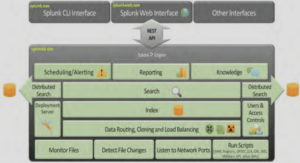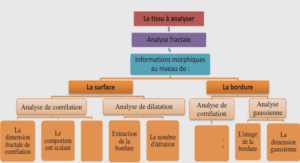Performance épuratoire événementielle
Materials and Methods
Experimental site description
The experimental site consists of a heavily trafficked (11 000 vehicles/day/direction) 4-lane highway and its drainage systems. The road, RD 212, is located in an industrial zone of Compans, France, a community near Charles de Gaulle Airport in the Paris metropolitan area (Figure 47) and has a speed limit of 90 km/h. Figure 47 : Map of the Compans study site location Two linear biofilters, a vegetative filter strip (VFS) and a biofiltration swale (BFS), are studied (Figure 48). Both are located on the road shoulder and receive direct runoff from a single direction of traffic.
The VFS was constructed in September 2012 and planted with a floral prairie seed mixture. Infiltrated water is drained at a depth of 15 cm using a sheet drain. The BFS was constructed in March 2016 and planted with Carex gracilis. The swale is separated into three sections using small, concrete check dams; the average ponding depth is 17 cm.
It is lined with a geomembrane and drained with an agricultural drain wrapped in synthetic fabric located at the base of its filter medium at a depth of 50 cm. The filter media for each device was prepared by mixing 40% silt loam topsoil with 60% 0-4 mm limestone sand by volume. Therefore, the two media have similar properties (Tableau 38), although higher organic content and lower pH are observed in the VFS, likely an effect of system aging
Field methods Stormwater was collected at three points to sample untreated road runoff (RR) from the reference watershed, water drained from the vegetative filter strip (VFS) and water drained from the biofiltration swale (BFS). At each point, flow was continuously measured using a tipping bucket flow meter (17L bucket volume at RR and 1L volume at BFS and VFS). Event mean samples were collected by flowproportional sampling over the course of each rain event at each point.
This was achieved using two refrigerated automatic samplers at RR and passive systems collecting a known fraction of each bucket tip at VFS and BFS. Materials in contact with sampled water were chosen carefully to avoid contamination. All tubing was coated in Teflon, and for each event, samples were collected in plastic bottles for metal, major ion, nutrient and global pollutant analyses, and in glass bottles for organic micropollutant analyses.
Between each event, all bottles were washed with detergent (Extran for plastic bottles, TDF4 for glass bottles), rinsed several times with tap water, thrice with deionized water and twice with ultrapure water. Field blanks were analyzed to verify that sampling equipment or procedures did not lead to sample contamination (Supplementary Data). While contamination was negligible for most species, slight but analytically significant increases (5-13% of median dissolved concentration) in As, Cu, V, Zn and NP1EC and a larger increase (67%) of Mo were observed from RR sampling Rétention et devenir des micropolluants dans les ouvrages de biofiltration 164 equipment.
Although an initial RR campaign during which water was left to stagnate 4h in the equipment showed contamination by all phthalate molecules, a second campaign, conducted under more realistic flow conditions, showed no contamination. Sampling equipment was deployed in response to meteorological predictions of significant (>2mm) rainfall and samples collected within 36h of the beginning of rainfall for the targeted runoff event, with the exception of one exceptionally long, continuous event lasting 40h, and within 24h of the end of RR runoff to ensure adequate sample conservation.
A total of 19 sampling campaigns were undertaken between February 2016 and July 2017, covering all four seasons and various hydrologic conditions (Tableau 39). During this period, a total of 917 mm of precipitation was recorded. RR samples account for 172 mm of this rainfall, as compared with 170 mm for the VFS and 178 mm for the BFS. While the goal was to collect inlet and outlet samples simultaneously, due to the later construction of the BFS and various technical difficulties, not all samples were available for each sampling period: 14, 15, and 18 samples were collected for RR, BFS and VFS, respectively. Sampling efficiency (the proportion of each event volume represented in the event mean sample) is discussed in Supplementary Data.
Analytical methods Samples were analyzed for a range of global parameters, including pH, electrical conductivity (EC), turbidity, total suspended solids (TSS), organic carbon (OC), nutrients (N and P forms), as well as 8 trace metals, 12 major ions, C10-C40 hydrocarbons (TPH), 19 polycyclic aromatic hydrocarbons (PAH), bisphenol-A (BPA), 7 alkylphenols (AP) and 5 phthalates (PAE) (for detailed list see Tableau 40). Nutrients were analyzed in the total and dissolved phases, while OC, metals, major ions and organic micropollutants were analyzed in the particulate and dissolved phases. Upon reception, samples were divided into aliquots for the analysis of different pollutants.
Aliquots used for the analysis of TSS, OC, BPA, AP and PAE were filtered immediately; the filtrate was extracted within 24h, while filters were freeze-dried before extraction. Others aliquots were put on ice and sent to partner laboratories within 24h of collection for the analysis of nutrients, TPH, PAH (Cerema in Trappes, France), trace and major elements (IFSTTAR in Nantes, France). These samples were filtered upon arrival at the partner laboratory.






